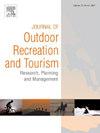数字技术对徒步旅行者空间行为和感知的影响
IF 4.4
3区 管理学
Q1 HOSPITALITY, LEISURE, SPORT & TOURISM
Journal of Outdoor Recreation and Tourism-Research Planning and Management
Pub Date : 2025-05-24
DOI:10.1016/j.jort.2025.100897
引用次数: 0
摘要
徒步旅行是德国最受欢迎的户外活动之一,在大流行期间获得了更大的吸引力,这可以解释为其较低的进入门槛。基于智能手机的应用程序等数字技术促进了路线规划、导航和徒步后的反思。然而,这在数字辅助和徒步旅行的核心动机(如体验自然和在日常生活中找到平衡)之间产生了紧张关系。虽然数字技术可以在具有挑战性的情况下提高安全性,但它们也带来了风险,例如过度依赖GPS导航或传统寻路技能的下降。尽管定量研究表明徒步旅行者之间的数字亲和力很高,但关于如何体验数字徒步旅行的定性研究有限。这篇概念性的论文通过运用“go - along”的方法来研究徒步旅行者对数字技术的使用和体验。从体育地理学和徒步研究的理论基础入手,展示了徒步研究的方法论。然后讨论了这种研究方法如何有助于更深刻地理解徒步旅行中的数字行为。重点是路线选择的决策过程,数字工具对导航和反射的影响,以及它们与徒步旅行的原始动机的一致性。最后,对方法上的挑战和潜力进行了批判性评估。本文章由计算机程序翻译,如有差异,请以英文原文为准。
Influence of digital technologies on hikers' spatial behaviour and perception
Hiking is one of the most popular outdoor activities in Germany and has gained even more traction during the pandemic, which can be explained by its low entry barriers. Digital technologies like smartphone-based apps facilitate route planning, navigation, and post-hike reflections. However, this creates a tension between digital assistance and the core motives of hiking, such as experiencing nature and finding balance in everyday life. While digital technologies can enhance safety in challenging situations, they also pose risks, such as over-reliance on GPS navigation or a decline in traditional wayfinding skills. Despite quantitative studies indicating a high digital affinity among hikers, there is limited qualitative research on how digital hiking is experienced. This conceptual paper makes a case for researching the uses and experiences of hikers with digital technologies by applying the method of “Go-Alongs”. After starting with the theoretical foundations of sports geography and hiking research, the methodology of walking methodology is displayed. It is then discussed how this research method can help to get a more profound understanding of digital behaviour in the context of hiking. The focus is on decision-making processes for route selection, the influence of digital tools on navigation and reflection, and their alignment with the original motives for hiking. Finally, methodological challenges and potentials are critically assessed.
求助全文
通过发布文献求助,成功后即可免费获取论文全文。
去求助
来源期刊

Journal of Outdoor Recreation and Tourism-Research Planning and Management
HOSPITALITY, LEISURE, SPORT & TOURISM-
CiteScore
6.70
自引率
5.30%
发文量
84
期刊介绍:
Journal of Outdoor Recreation and Tourism offers a dedicated outlet for research relevant to social sciences and natural resources. The journal publishes peer reviewed original research on all aspects of outdoor recreation planning and management, covering the entire spectrum of settings from wilderness to urban outdoor recreation opportunities. It also focuses on new products and findings in nature based tourism and park management. JORT is an interdisciplinary and transdisciplinary journal, articles may focus on any aspect of theory, method, or concept of outdoor recreation research, planning or management, and interdisciplinary work is especially welcome, and may be of a theoretical and/or a case study nature. Depending on the topic of investigation, articles may be positioned within one academic discipline, or draw from several disciplines in an integrative manner, with overarching relevance to social sciences and natural resources. JORT is international in scope and attracts scholars from all reaches of the world to facilitate the exchange of ideas. As such, the journal enhances understanding of scientific knowledge, empirical results, and practitioners'' needs. Therefore in JORT each article is accompanied by an executive summary, written by the editors or authors, highlighting the planning and management relevant aspects of the article.
 求助内容:
求助内容: 应助结果提醒方式:
应助结果提醒方式:


